-
Like a Beautiful Lady: the West Lake Tea Ceremony
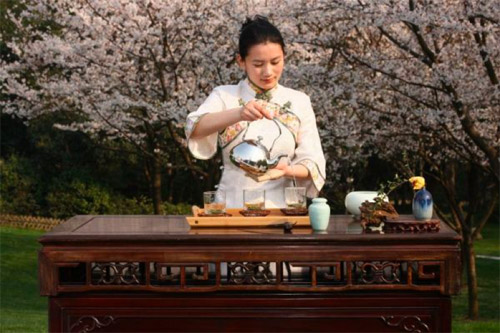
The West Lake Tea Ceremony, to showcase locals’ tea drinking habits, incorporates the city’s splendid culture with a charm of gentleness and elegance.
Since ancient times, people of Longjing Area have been able to plant, make, appreciate, and taste the finest local tea. They are strict on water when it comes to tea drinking. The water from Hupao Spring can help make the soup clear and bright, improves the fragrance, and brings out more extracts from the leaves. Therefore, Longjing Tea and Hupao Spring are the “Great Duo of the West Lake”.
-
A Pursuit of Nobility: Literati Tea
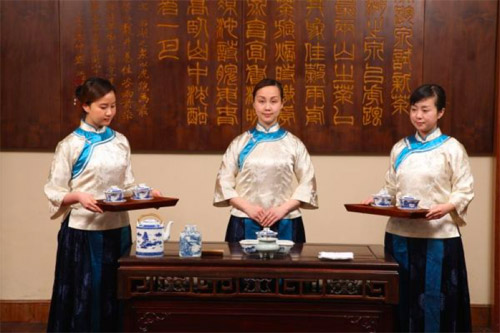
Literati have been loving tea since old days. Their preference for natural landscapes and tranquil lives is well reflected in the tea culture. Tea is a symbol of their virtue and moral principles. This ceremony, based on Wuyuan County, Jiangxi Province (the hometown of Zhu Xi, China’s greatest scholar of the 12th century), restores the tea drinking practice in the Jiang’nan region (south to the Yangtze River) in the late 19th and early 20th centuries.
-
A Sip of Unsecular Wisdom: Zen Tea
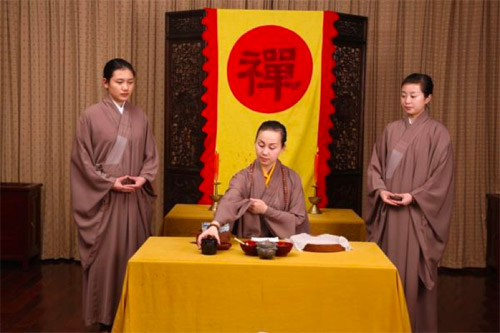
For centuries, people have been inspired by the commonality between tea and Zen. “Drink some tea” has long become a phrase in the Zen community. The Zen tea performance is a good exposure to the philosophy. Jiang’nan (south to the Yangtze River) is a vital place in the sects and schools of Zen Buddhism. Huangbo tea (Linji Sect) and Yunju tea (Caodong Sect) are the premium choices. In the ceremony, people have a better understanding of life.
-
The Rite of Oolong: Kung Fu Tea
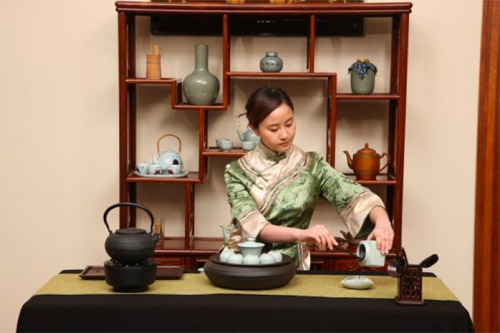
Oolong tea is also known as Kung Fu Tea in Fujian, Guangdong, and Taiwan. The utensils are exquisite, the brewing technique is unique, and the drinking procedure is special. It is not only a daily habit but also the first etiquette of communication. The water is preferably from a spring or well. The tea is preferably Tieguanyin, which is semi-fermented, baked, and shaped. The first step is to warm the pot and cups, and then fill the tea leaves with 70% of the pot. The water has to be poured at a high place, while tea soup is distributed at a low place. Foams are scraped, and lids are rinsed.
“The greatest chefs are from the Southeast, yet Kung Fu tea and its soup taste the best” – as the old saying goes.
-
A Bowl for Friendship: Lei-Cha (Pounded Tea)
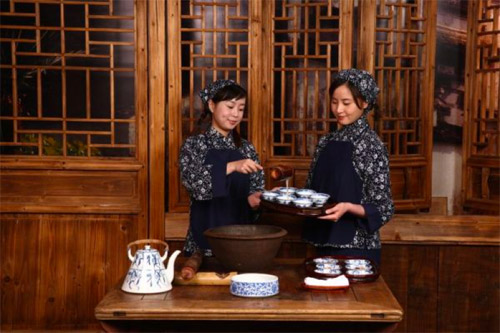
Lei-Cha (pounded tea) has been popular in Hunan, Jiangxi, and Fujian for centuries. It is not only a daily drink but also an important ritual to meet friends and families.
The pounded tea ceremony, down from generation to generation, is cheerful and simple. Not as elegant and noble as the one specifically for the upper class, the tea culture for masses reflects the spirit of the Chinese people always pursuing good lives. Aside from the fragrance, a sip also implies good morals and friendship.
-
A Bluish-Green Rhyme: Oolong Tea
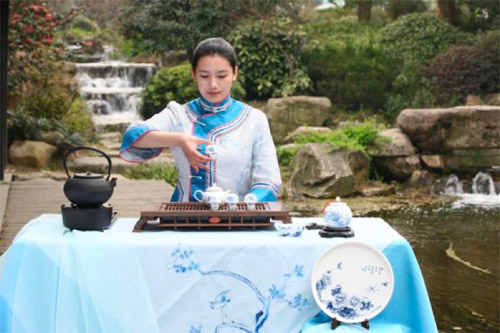
Oolong tea is usually served in blue-and-white porcelain.
Oolong tea, which has both the fragrance of green tea and the sweetness of black tea, has a natural floral fragrance after brewing. It has been popular since the Ming Dynasty.
Blue-and-white porcelain is mainly produced in Jingdezhen, Jiangxi Province, which is China’s porcelain capital. People love it for its pure, elegant, and noble character.
-
A Sip of Noble Fragrance: Jiuqu Hongmei
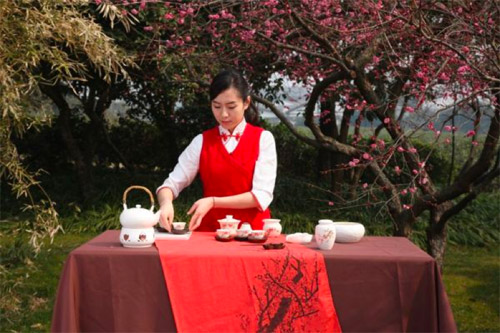
Jiuqu Hongmei, a tea as Zhejiang’s specialty, has been famous since the Qing Dynasty. “Hongmei” means “red plum blossoms”, for people admire the flowers’ fragrance and resilient character.
It’s just like a poem – “Agate color in the white jade cup, the plum blossom fragrance at the bottom of the tongue.” The floating fragrance deep into our hearts and minds can be so refreshing and calming.
-
A Tranquil Moment: Tea Whisking in the Song Dynasty

Chinese tea culture thrived in the Tang Dynasty and flourished in the Song Dynasty. Song was an important stage in the development of tea culture. Tea whisking (Dian-Cha) is a competition that appeared first in the late Tang Dynasty and became well received in the Song and Yuan dynasties, where tea leaf quality was assessed and whisking skills were compared. It is also a game popular in the Song and Yuan periods.Boiling tea, grinding tea, sieving tea, cooking water, whisking tea, tapping, etc. are not only exquisite techniques but also the ethos of that time.
-
Tea Ceremony: Baopu Chengqing
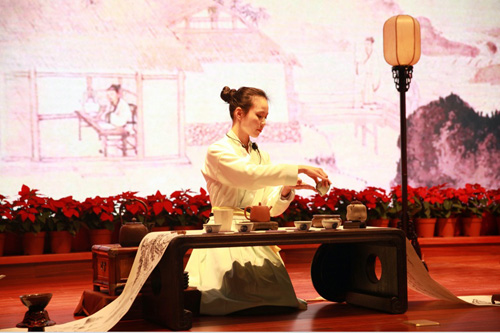
The CNTM-created ceremony won the silver medal in 2016 National Emerald Cup Tea Art Competition. Themed “inheritance and innovation”, it pays tribute to the Chinese traditions and its literati community.
-
A Tribute to the Ancients: Tea Ceremony in the Tang, Song, Yuan, Ming, and Qing Dynasties
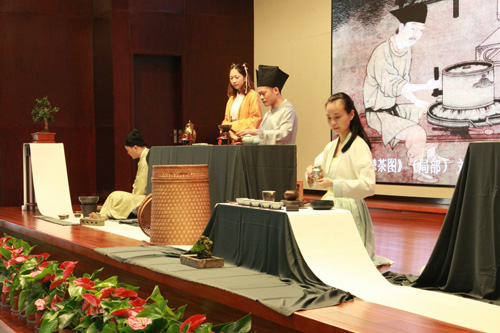
The ceremony we design reflects the evolution of tea-making habits and techniques over different periods in China, such as “tea boiling” in the Tang Dynasty, “tea whisking” in the Song and Yuan dynasties, and “tea brewing” in the Ming and Qing dynasties. A quiet environment, elegant utensils, peaceful people, clear tea, and a calm spirit reflect the ancient Chinese philosophy of harmony between humanity and nature.
-
Tea Ceremony: Fragrance on the West Lake
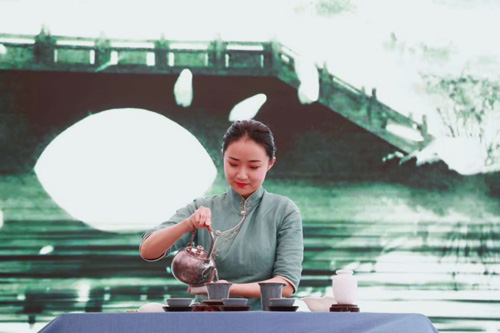
West Lake is famous not only for its natural beauty but for its cultural and historical legacy. It is the spiritual home for the Chinese literati and the paradise on earth for everyone. The same is true of tea. Tea is well nurtured by heaven, earth, and mankind. This ceremony shows how the West Lake is scented by the signature Longjing Tea.
-
Huishan Tea Party Ceremony
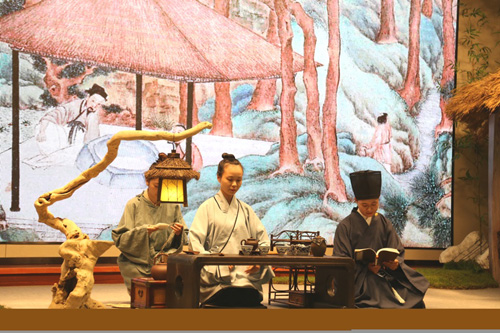
Inspired by “The Huishan Tea Party”, a masterpiece of the great painter Wen Zhengming of the Ming Dynasty, the ceremony manifests the ancient Chinese philosophy of harmony between mankind and nature. It is a reproduction of tea drinking back to the Ming period.
Tea Ceremony for Weddings
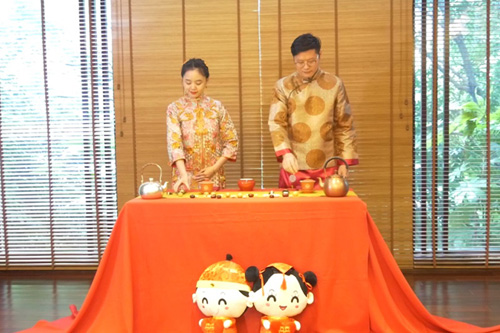
Tea is a symbol of purity, dedication, fortune, and many offspring. The Chinese ancients believed that once the tea seeds landed, they could not be transplanted. Therefore, tea is a symbol of unswerving love for one’s spouse. In modern Chinese weddings in different regions and ethnic groups, such a tea ceremony is still widely performed.
A Spoonful of Spring: West Lake Longjing Tea Ceremony
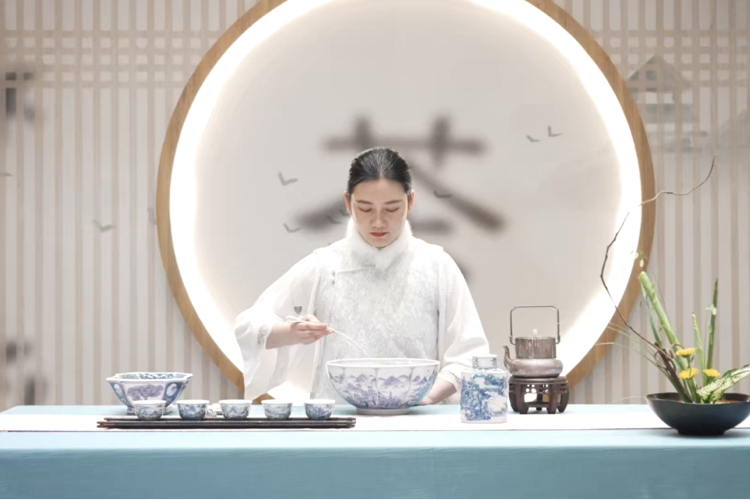
We’ve customized blue-and-white tea ware that features the Top Ten Views of the West Lake. Encompassing spring, summer, autumn, winter, dawn, morning, dusk, night, sunshine, fog, wind, rain, flowers, birds, fish, and insects, the Top Ten Views refer to an organic combination of poetry, painting, and scenery at aesthetic and philosophical levels. The tea artist will make tea in a large bowl and uses a spoon to distribute it into cups.
Tel: 0571-87964221



